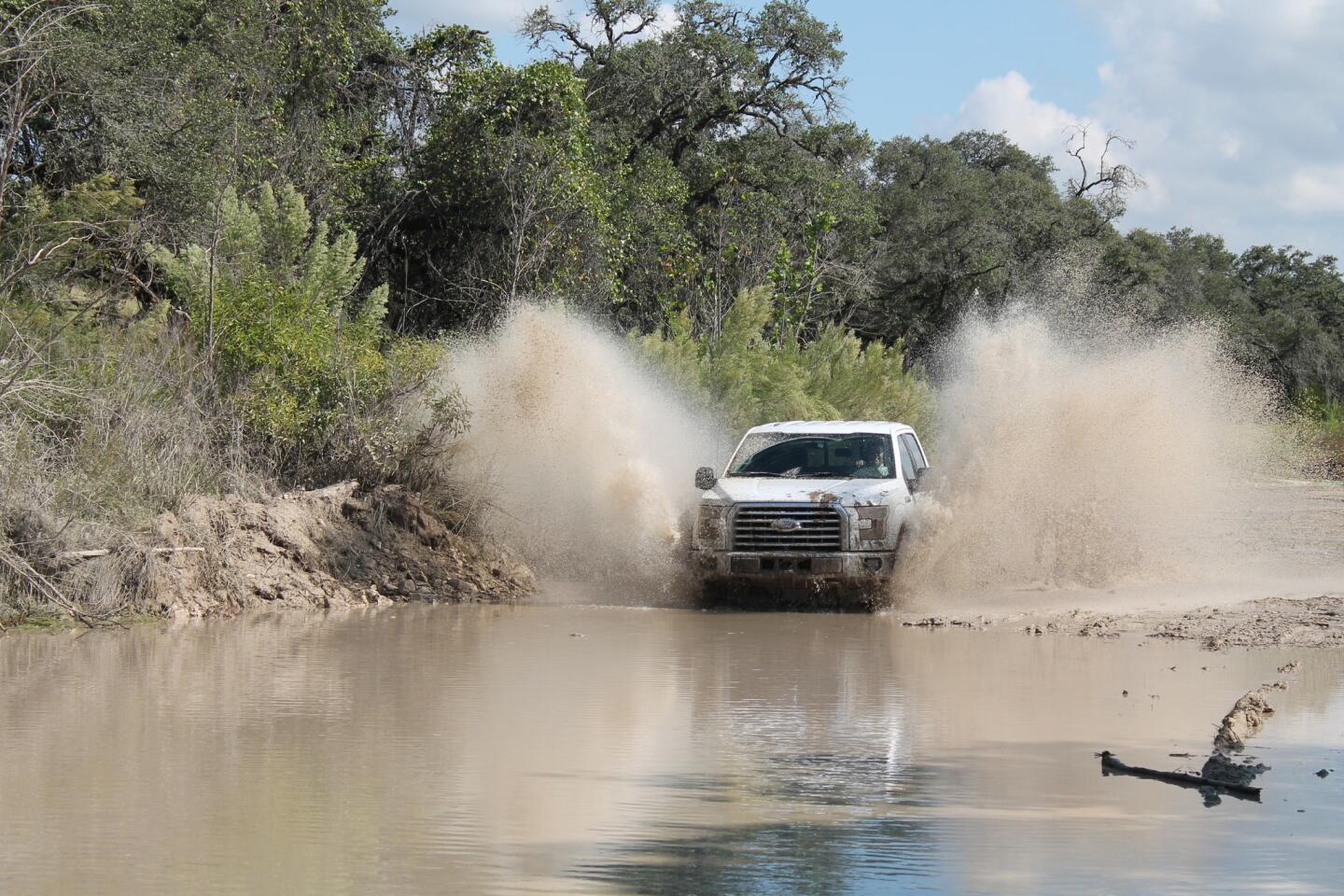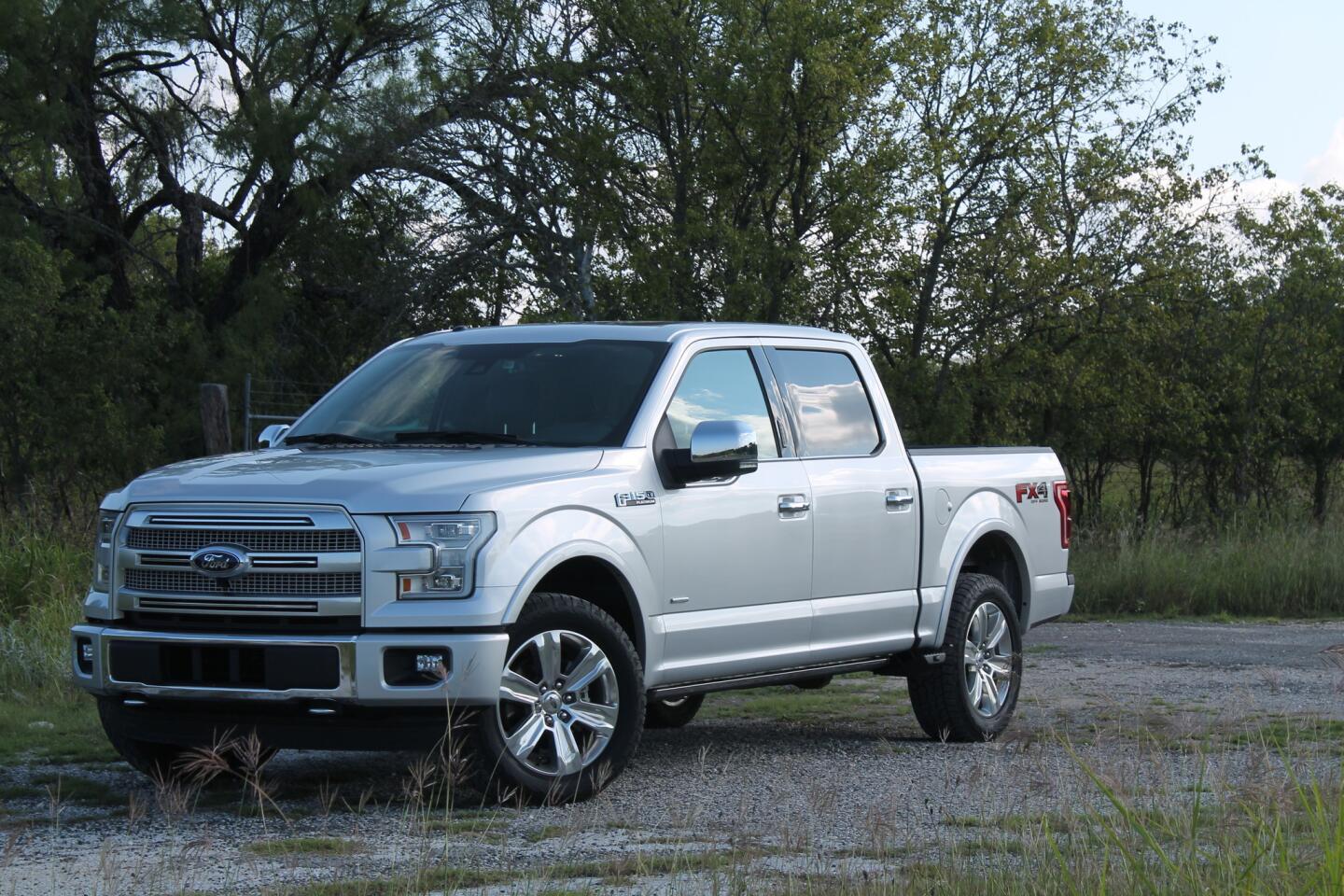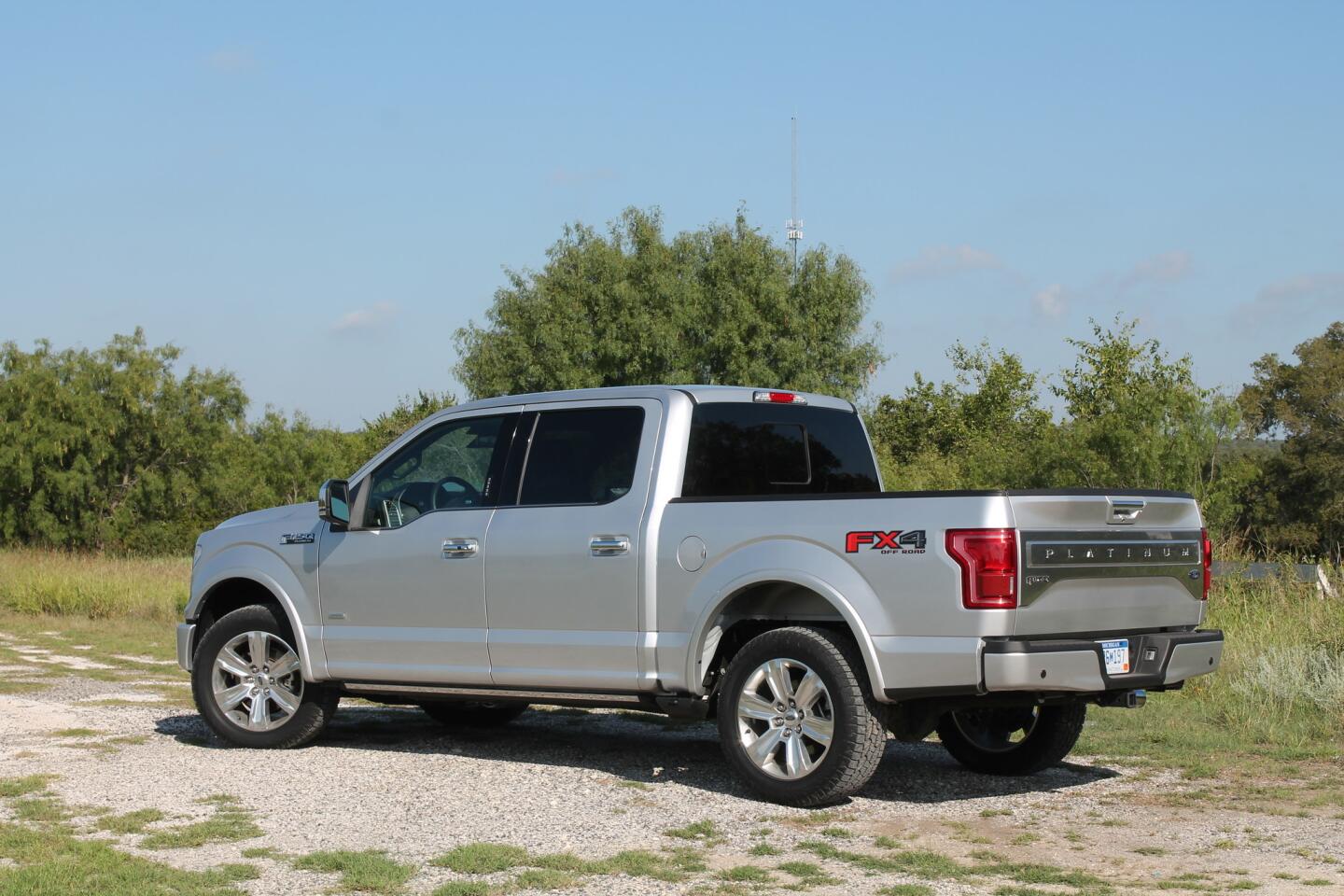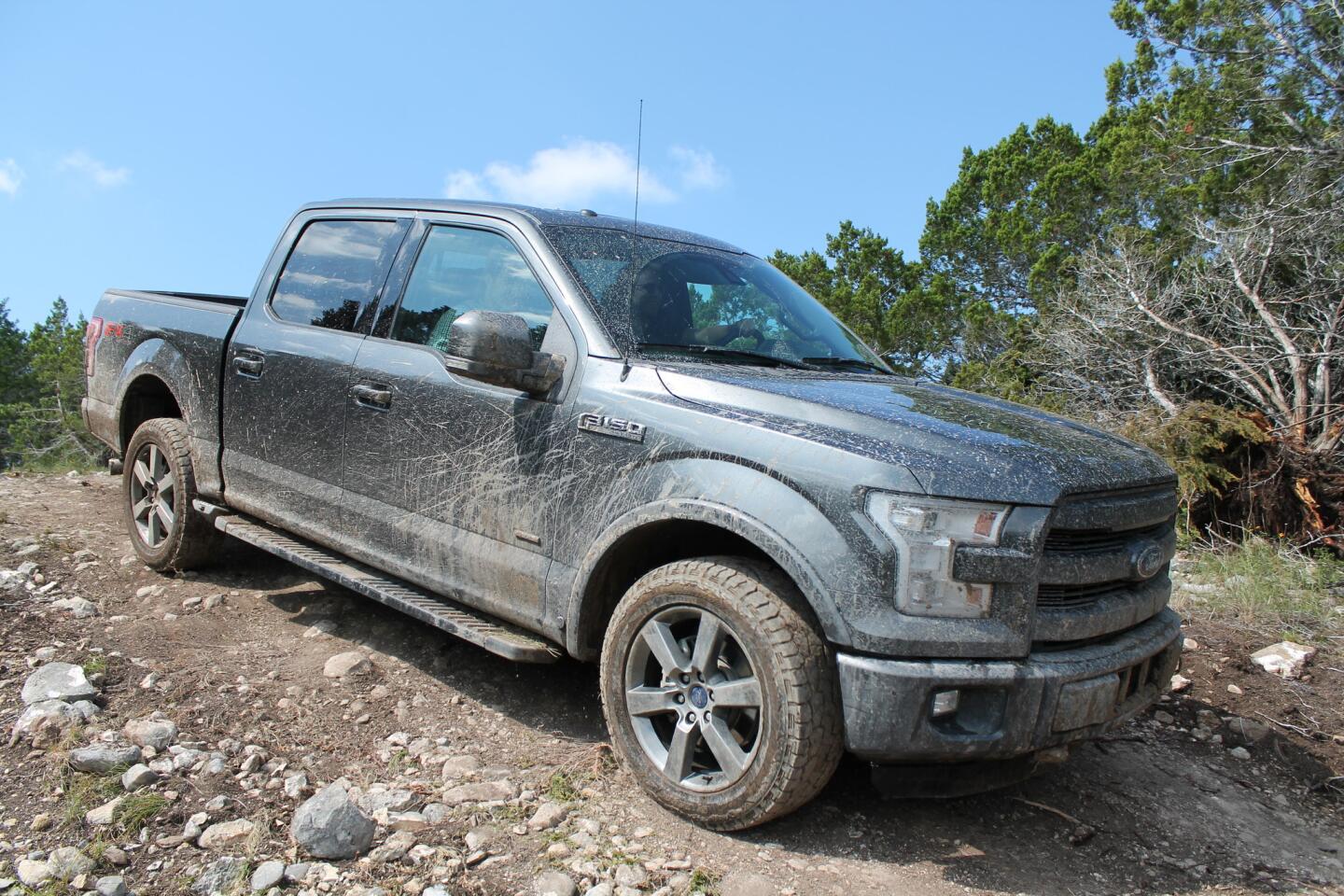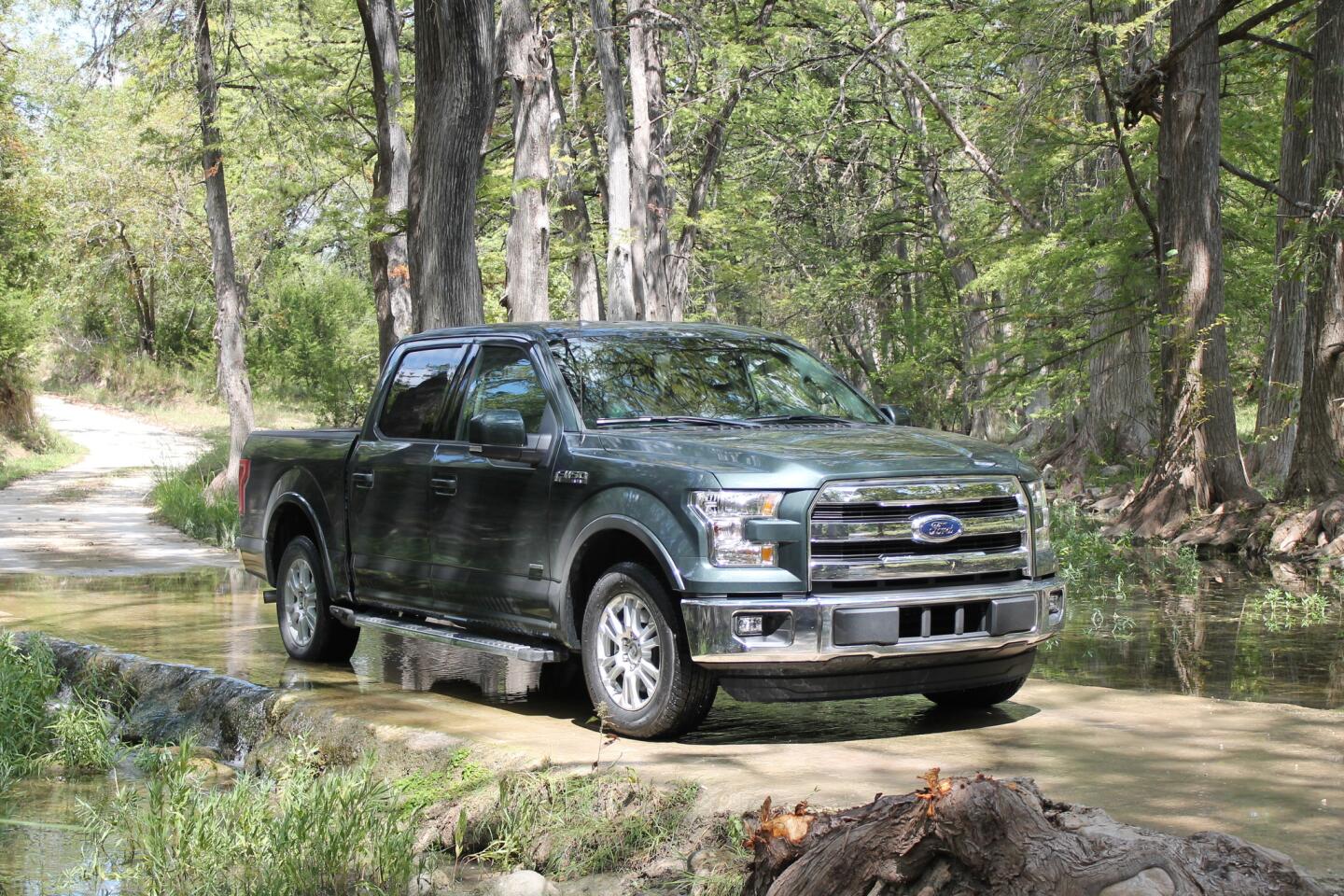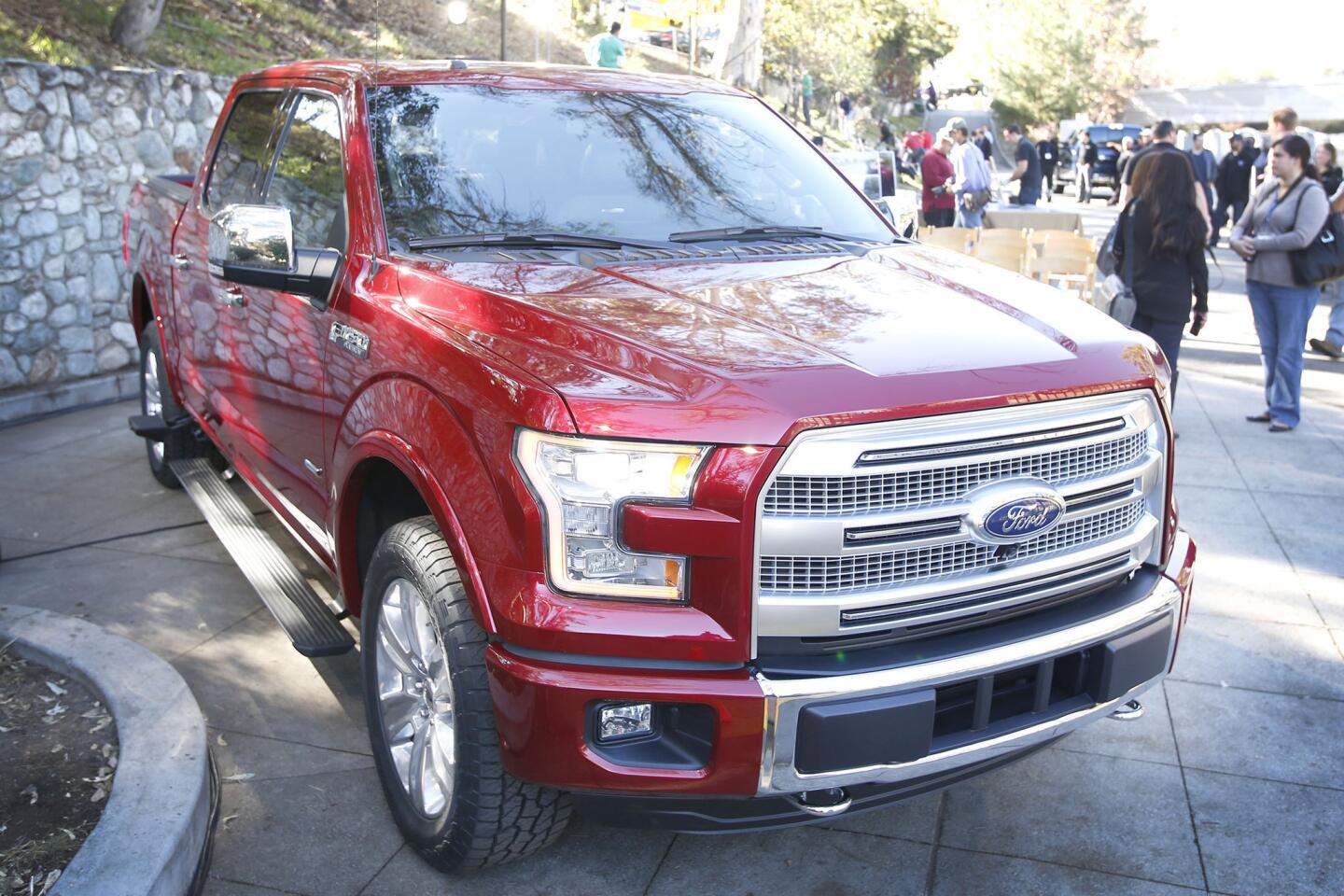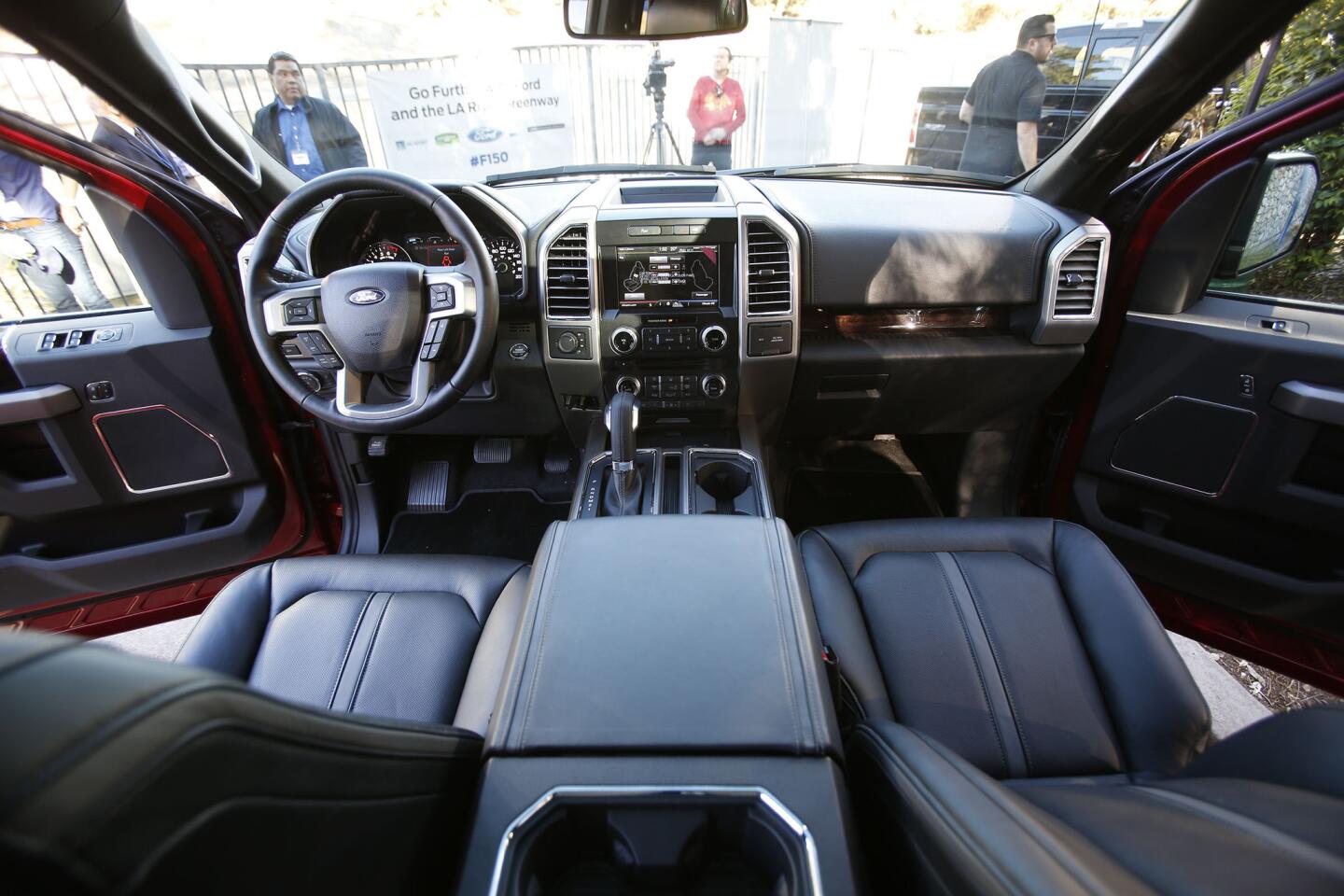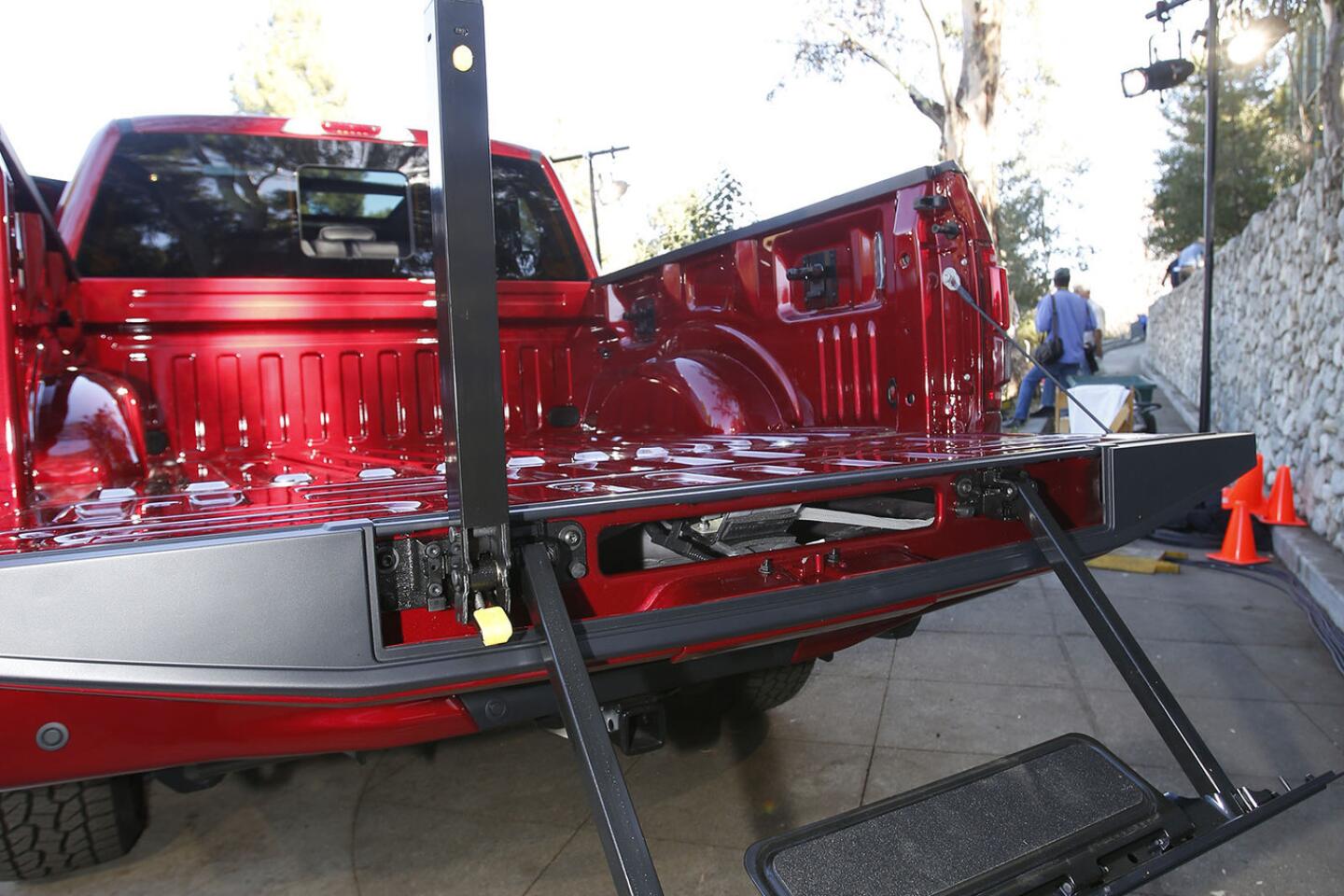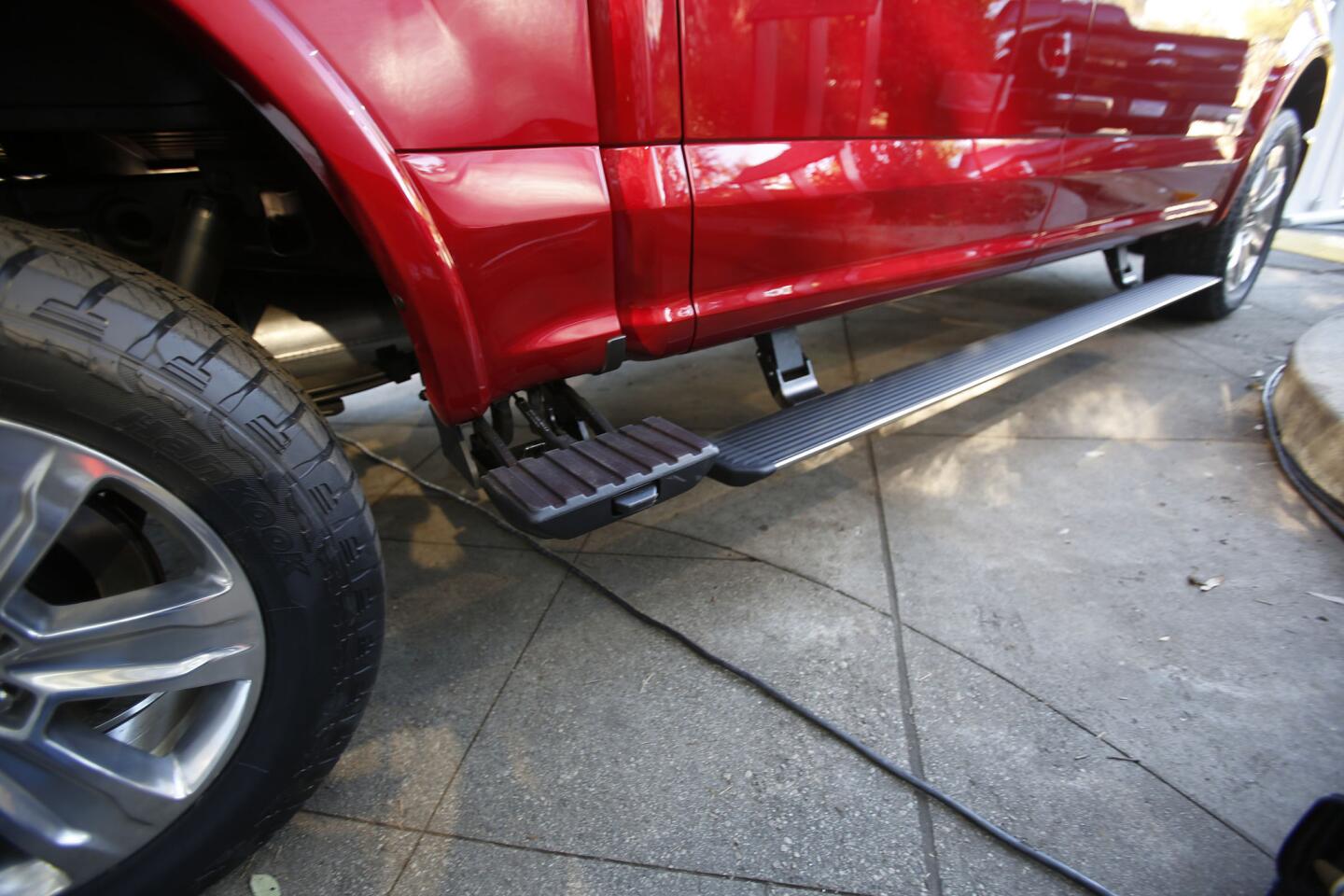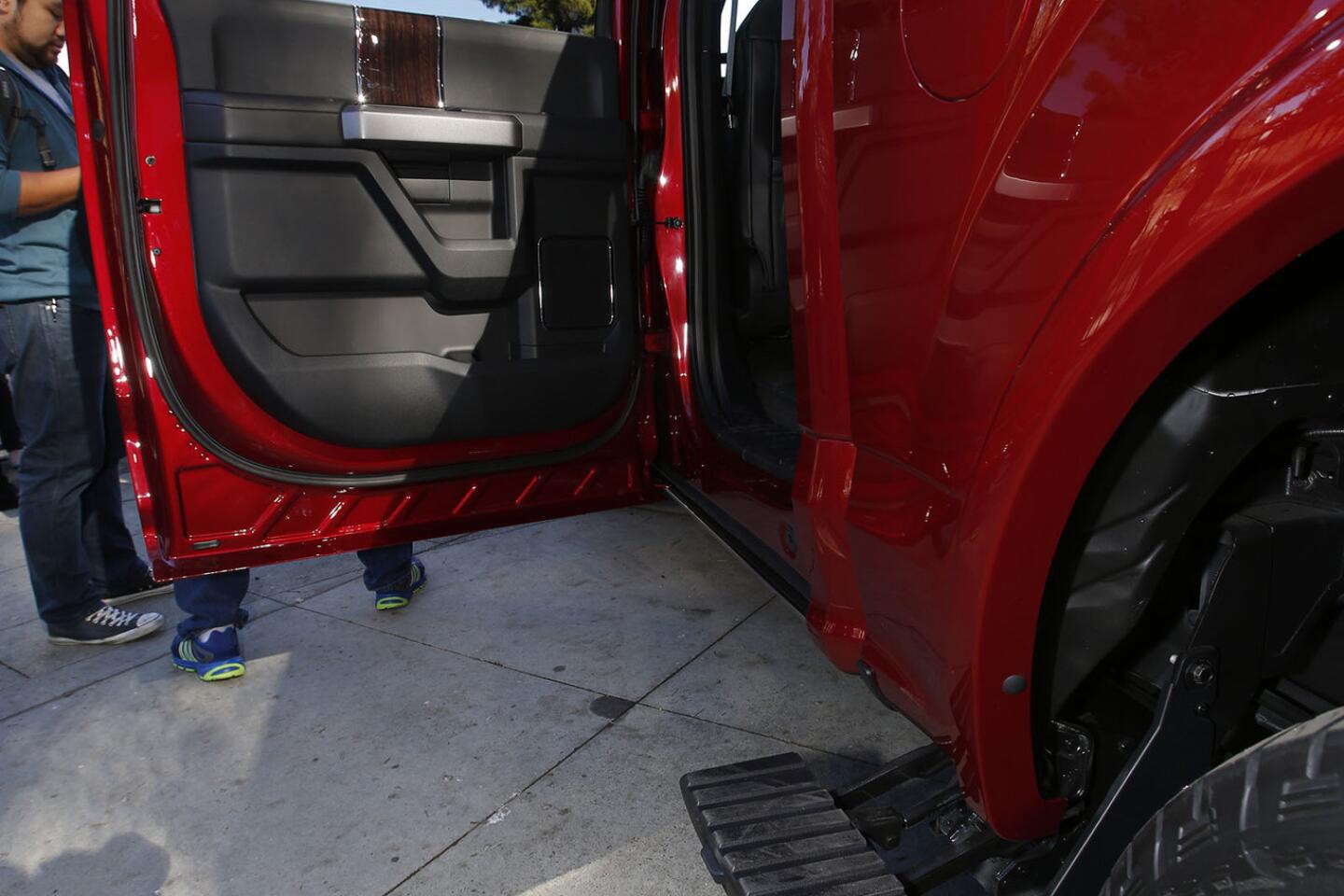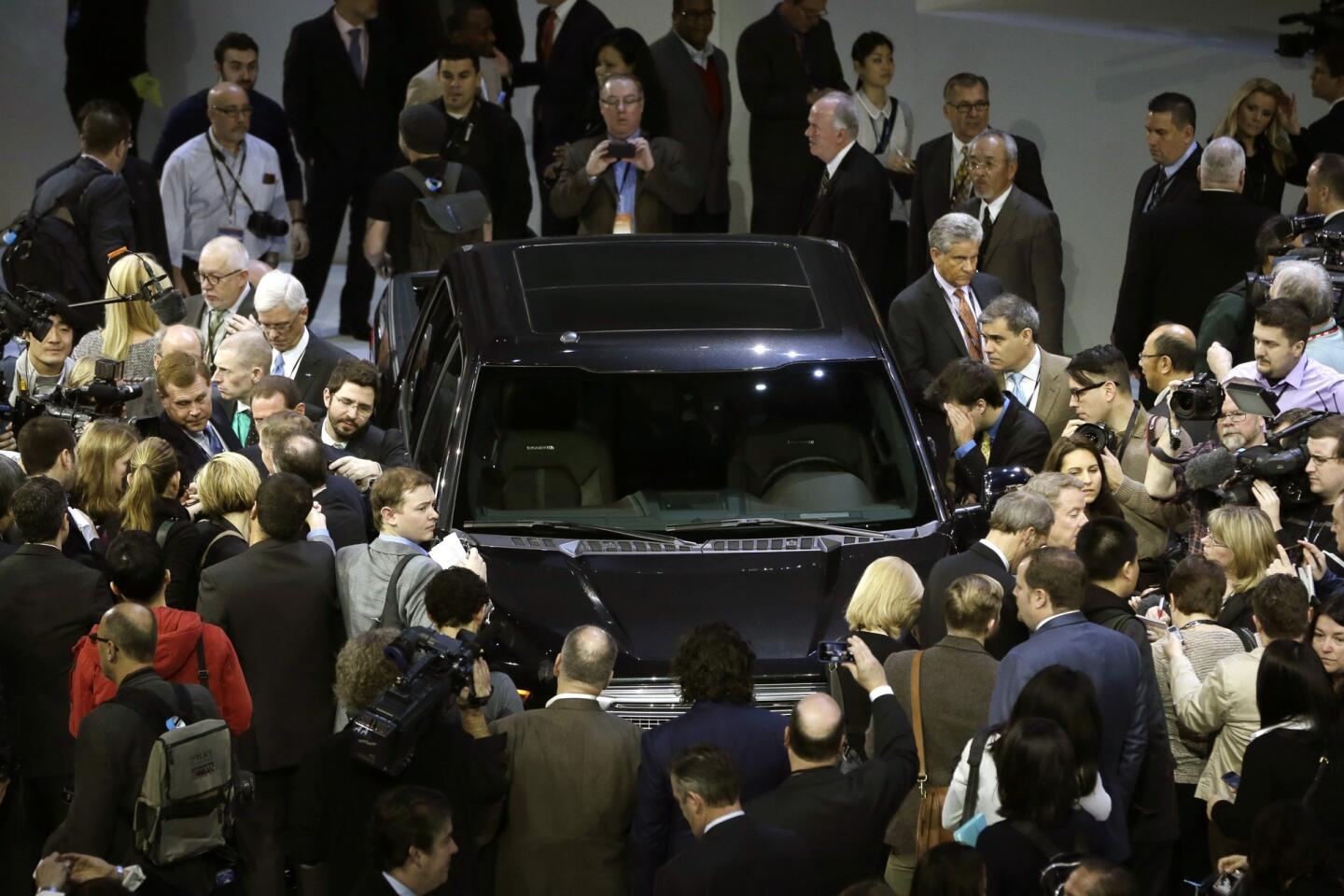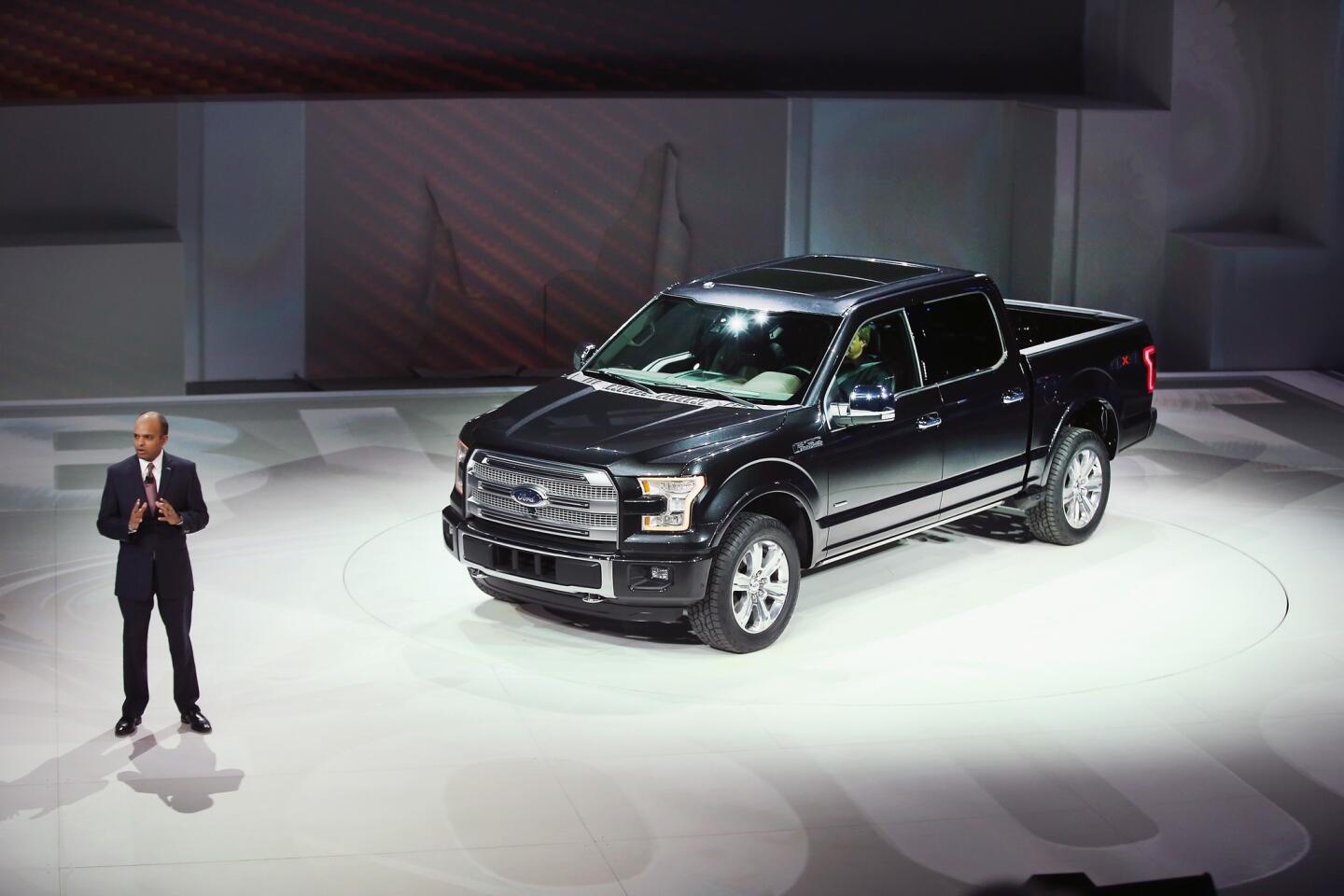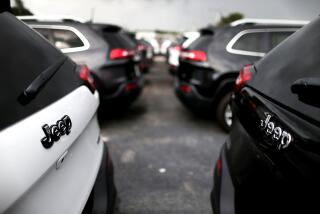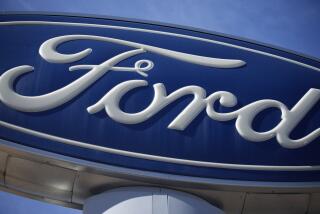First Drive: Ford’s new F-150s are tough, clever — but not revolutionary
Do not approach Ford’s all-new F-150 truck expecting a revolution.
For all the hype about the lightweight aluminum body, and the promises of groundbreaking efficiency and hauling capabilities, the 2015 model is still just a truck.
When they roll into dealerships in December, the new F-150 models will be cut from the same cloth as their predecessors. Four doors, four wheels, beds and cabs of varying sizes; engines with six or eight cylinders; some turbocharged, some not.
That’s a good thing, as became clear during a first drive last week in San Antonio, where Ford invited the automotive media.
Ford’s choice to replace steel bodies with aluminum carries big risks and costs for the automaker. The F-Series trucks have been the bestselling vehicle in the U.S. every year since President Reagan’s first term.
But you don’t mess with trucks, just as you don’t mess with Texas, the state that eats up 20% of Ford’s truck sales each year. And that’s exactly where we spent two days towing, muddin’, cruising — even drag-racing and autocrossing — Ford’s 2015 F-150 lineup.
The first impressions were largely positive. The new F-150 models are as tough as they are clever, a combination that should keep Ford ahead of competitors such as Chevy’s Silverado and GMC Sierra twins, Ram’s 1500, and Toyota’s Tundra.
Four engines are available in the 2015 F-150. The base model starts at $26,615 and comes with a 3.5-liter V-6 engine that makes 283 horsepower. Ford expects about 16% of F-150 buyers — mostly fleet and commercial outfits — to buy this version.
The rest of F-150 buyers are expected to be split evenly among the remaining three engines in the lineup.
The biggest shift for this generation of F-150 is the first step up. For just $495 more, buyers can choose an all-new 2.7-liter, twin-turbocharged (EcoBoost) V-6. This engine wouldn’t have been possible with a heavier, steel-bodied truck.
“If I had told you a couple of years ago that you could have the kind of performance that’s in a 2.7-liter V-6, people would have said, ‘You’re crazy,’” said Joe Hinrichs, president of the Americas for Ford. “So the world is changing in that regard.”
It was also to be Ford’s biggest hope for class-leading efficiency — a distinction it will probably lose to a turbo diesel version of the Ram, which boasts a highway driving rating of 28 mpg. Official Environmental Protection Agency numbers for the full line of the new F-150 trucks will be announced later this year. But this 2.7-liter V-6 isn’t expected to top the Ram’s diesel.
And though the Ford’s 325 horsepower certainly tops the Ram’s anemic 240, the Ram’s 420 pound-feet of torque — the number that matters more for acceleration and towing — easily outpaces the 375 pound-feet of this new Ford engine. The Ram can also tow about 450 pounds more than the Ford’s 8,500-pound rating.
But the Ford’s 2.7-liter V-6 is an excellent engine, and it appeals to a wide swath of Ford F-150 buyers. It comes with a six-speed automatic transmission with both sport and towing modes, and the sport setting puts even more pep in this already eager engine.
It’s quiet and smooth and comfortably moved the $44,850 Lariat 4x2 SuperCrew (four full doors) we tested with three people inside. That money — which is just a little more than the $42,000 average spent on full-size trucks — buys more than enough features.
Only those with either large egos or large trailers will truly need the bigger EcoBoost engine.
That’s the 3.5-liter turbocharged V-6. While Ford previously had a V-8 engine leading the F-150 lineup, this V-6 has been moved to the top of the heap.
With 365 horsepower and 420 pound-feet of torque, it does everything the smaller EcoBoost engine does, only better and faster. And Ford enhanced the experience by playing an artificial engine note through the truck’s speakers to remind drivers that there’s internal combustion happening somewhere.
More important, this engine is the industry leader in terms of towing capacity for light-duty trucks at 12,200 pounds, enough for a trio of horses in a trailer.
If payload matters, there’s still a trusty V-8 in the middle of the F-150 lineup. It boasts 385 horsepower, 387 pound-feet of torque and an industry-leading 3,300-pound hauling capacity in the bed.
Other gee-whiz options can be added to nearly any F-150. There are LED lights on the side-view mirrors you can use to light up a site in front of you without using the headlights. Or fold the mirrors in to light up the road next to you.
A step and handle fold out of the tailgate when it’s down, for easier climbing into the bed. And a smaller step on the side of the truck, in front of the rear wheels, pops out by kicking it. The driver’s and passenger’s window sill dips closer to the mirror for excellent visibility.
The biggest obstacle in keeping the F-150 the most popular vehicle in the U.S. (763,000 sold in 2013) will be Ford itself. Building a truck body out of aluminum presents drastically different challenges than steel.
“Ford is reinventing the assembly line for the 21st century,” said Dave Sullivan, an analyst at AutoPacific. “This is unprecedented territory.”
Aluminum isn’t welded easily like steel, forcing Ford to use rivets and industrial-strength adhesives. This switch would be a big deal for any automaker. But Ford needs to assemble and paint the F-150 at a breathtaking pace — up to 14,000 a day once its two plants are at full capacity next year.
And there are myriad variations of the truck’s cabs, bed lengths, frames and engines that make things more complex; this isn’t Ford’s Fusion sedan where every body is identical.
“Nobody’s done aluminum with this kind of complexity, as fast as Ford needs to make them,” Sullivan said. “This is going to be very interesting to watch.”
To get the plants ready, Ford has spent $359 million on retooling one factory in Dearborn, Mich., and an additional $1 billion to update a second plant in Kansas City.
Wrecks present a problem as well. Repairing and repainting aluminum bodies requires a significant investment from both Ford dealers and independent auto body shops.
I-CAR, the nonprofit training organization in charge of teaching technicians how to weld and repair Ford’s upcoming aluminum trucks, says just 14% of the 68,000 nationwide technicians have been trained on the process, though more are signed up for future courses.
That could also push up insurance premiums on the trucks. Insurance companies such as Allstate and State Farm say they’re taking a wait-and-see approach.
Under the sheet metal, Ford’s F-150 is an excellent update to the country’s most popular vehicle. The turbocharged engines are particular standouts, and together with a hardy exterior and interior, and clever design features, this truck will probably keep its sales lead.
david.undercoffler@latimes.com
